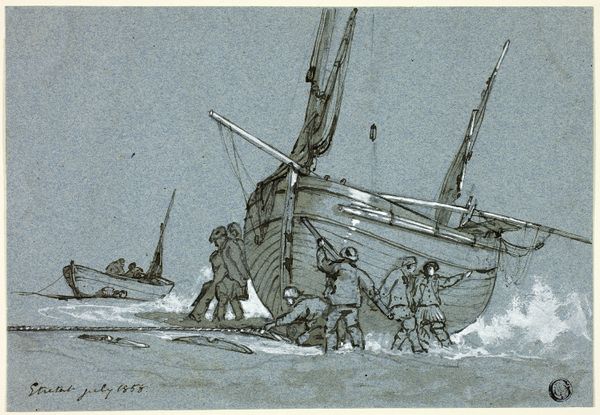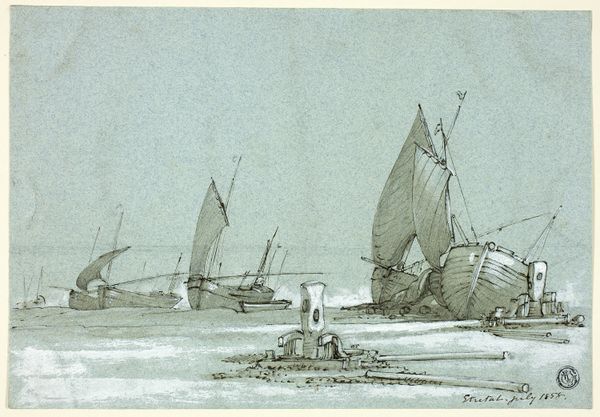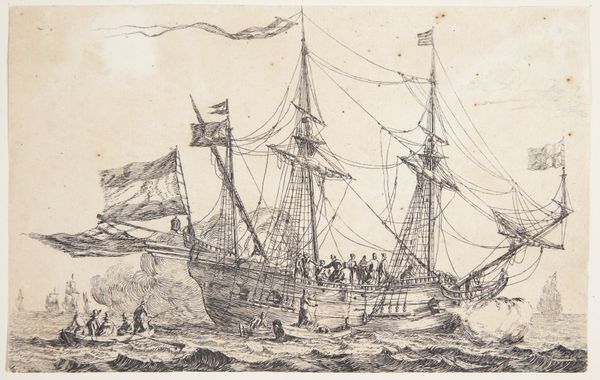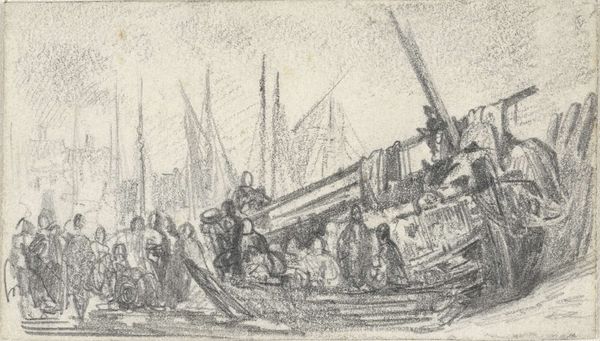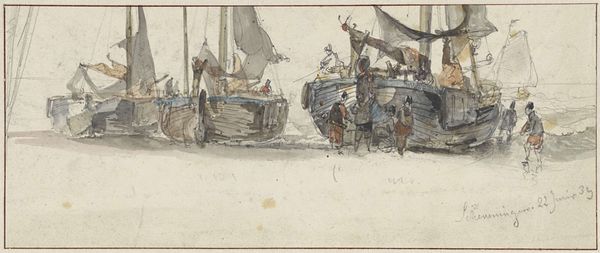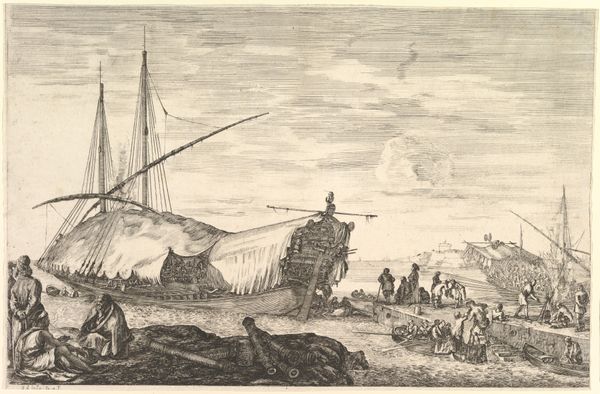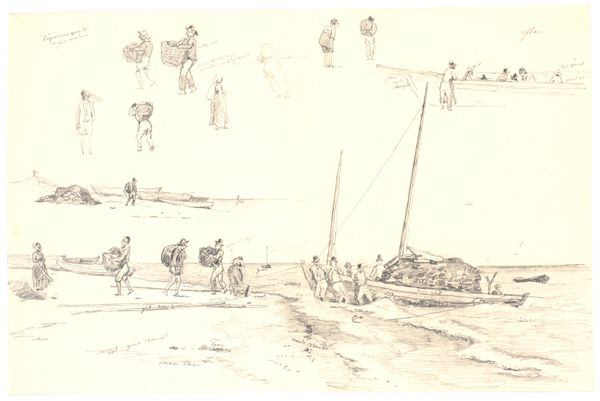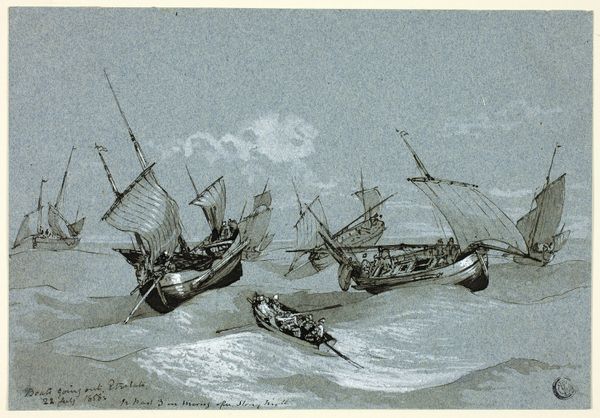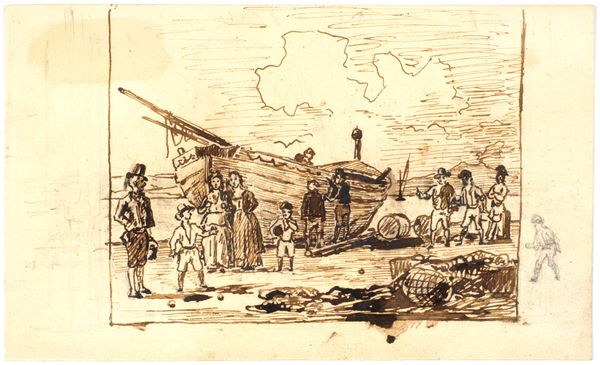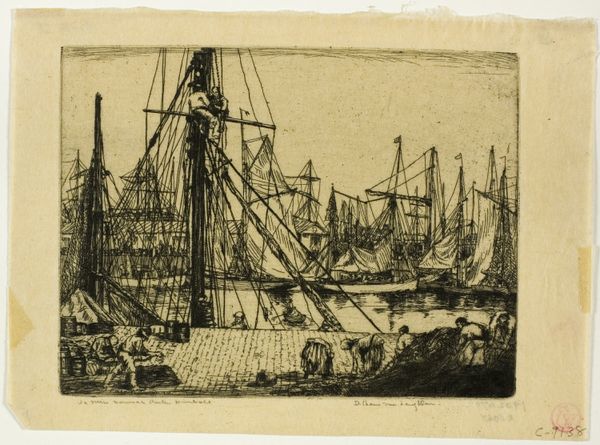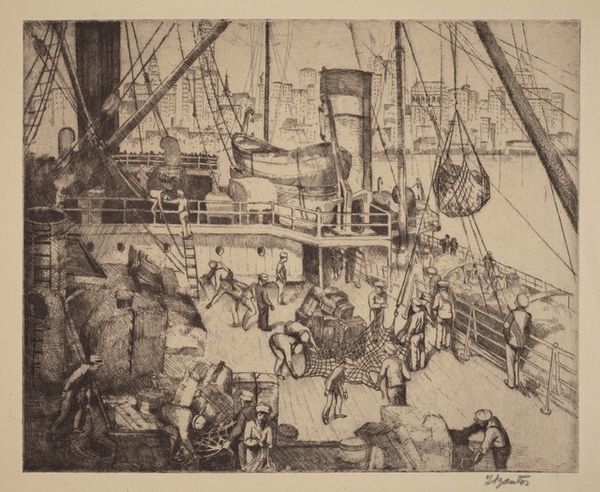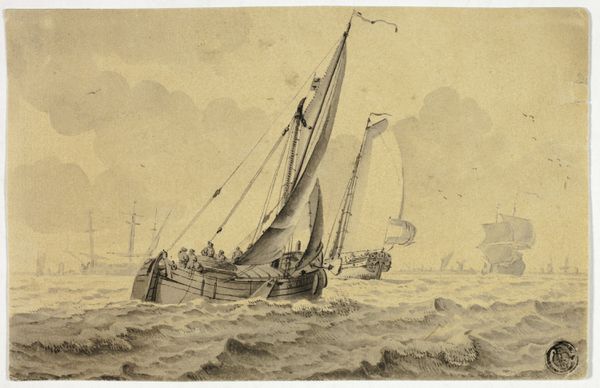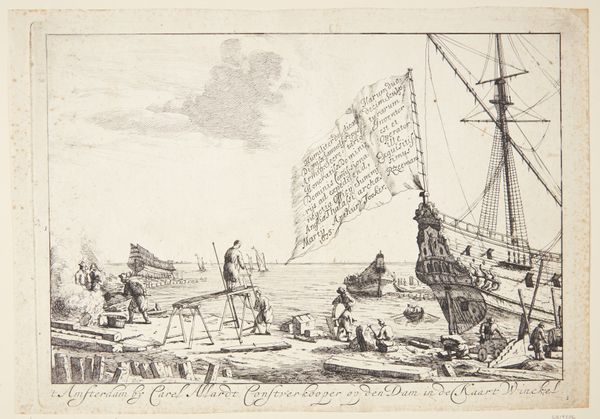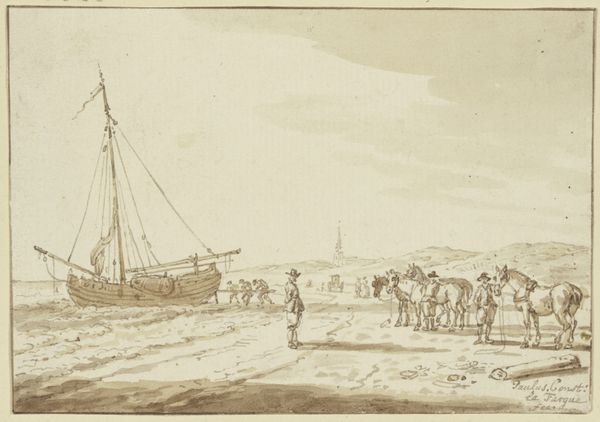
drawing, print, gouache, paper, ink, pen
#
drawing
# print
#
gouache
#
landscape
#
paper
#
ink
#
pen
#
watercolour illustration
#
genre-painting
Dimensions: 172 × 251 mm
Copyright: Public Domain
Editor: Here we have Clarkson Stanfield's "Entretat," likely created around 1858 using pen, ink, gouache, and watercolor on paper. There's an immediate sense of labor and perhaps even a touch of precariousness in this coastal scene. What social dynamics might be at play? Curator: That's an insightful starting point. What strikes me most is how this genre-painting provides a glimpse into 19th-century maritime life, a period marked by significant shifts in labor and trade practices. Stanfield, as an artist, was deeply influenced by Romanticism. But, considering his time, shouldn’t we also address the representation of labour itself within the framework of burgeoning industrial capitalism and social inequality? Do you see echoes of these tensions in the artist's composition choices or portrayal of individual figures? Editor: The figures definitely seem caught in a liminal space between land and sea, engaging in visible work… Perhaps they are being displaced or hoping to reach other locations, given England's colonial ambitions? Curator: Exactly. Now consider how this image, even in its seeming simplicity, might serve to either celebrate or subtly critique the era’s economic structures and the human cost that came with them. How are social hierarchies portrayed? Editor: I hadn’t considered that. Maybe the family unit on the shore, as opposed to the cluster of men working on the boats, offers a visual commentary about familial relationships. Are they witnessing an emigration of some kind? Or saying goodbye to a member who may leave and not return? Curator: A powerful observation. And doesn't it also echo anxieties about land ownership and social mobility? The landscape, which appears so natural, in fact is heavy with social impositions and implications. The image serves as a reflection of those struggles of a specific place and era, yet, at the same time, invites conversation of contemporary predicaments, don't you agree? Editor: Definitely. I came into this discussion thinking about the literal portrayal of boats and people, but I'm now thinking about the bigger picture: labor, social inequality, displacement. Thanks, this gives me a lot to explore further.
Comments
No comments
Be the first to comment and join the conversation on the ultimate creative platform.
